At last week’s TCB Council Workshop in Baltimore, TCBs – including MET Labs – were given an update on upcoming wireless regulatory and compliance changes. Here are the most notable.
- Devices operating in the U-NII-1 band will be allowed 30 dBm (1 W) conducted power, a PSD of 17 dBm/MHz and an allowance of a 6 dBi antenna. However, the maximum EIRP above 30 degrees elevation is limited to 21 dBm.
- The upper edge of the U-UNII-3 band has been extended by 25 MHz. Therefore, the band is now 5.725 – 5.850 GHz which is in line with the 15.247 DTS band. Both rule parts will be consolidated.
- Bin1 radar waveform will be updated to better account for actual Terminal Doppler Weather Radar (TDWR) waveforms.
For equipment that is already certified, a Class II Permissive Change may be performed to update the device to the new rules. A Class II PC is performed when there are changes to the radio, such as addition of new antenna or if a rule change allows for additional provisions.
The new rules will take effect 30 days after being published in the Federal Register. The publish date is expected soon.
The FCC has also updated the TCB Exclusion list. The exclusion list is now “empty.” Therefore, TCBs can now grant almost all applications, including equipment operating in the DFS bands and UWB equipment. However, TCBs will have to follow a Permit But Ask (PBA) procedure with the FCC to grant these devices. DFS equipment will still be independently tested by the FCC as before. But this is still expected to reduce the time to market for manufacturers.
The R&TTE Directive is getting a face lift. It will now be called simply the Radio Equipment (RE) Directive. Telecommunications equipment will be moved over to the EMC Directive. The RE Directive will be limited to wireless RF transmitter devices and receivers. The use of the exclamation mark (i.e. !) and the NB number (if applicable) will not be required adjacent to the CE mark.
EN 300 328 v1.8.1 will become effective end of the year and any new radio device placed on or after this date will need to meet the new standard. The previous version of the standard will cease to give presumption of conformity with the requirements for Article 3(2) of the Radio Equipment Directive.
Want to know how these changes affect your products? Contact us to request a quick-response quote or schedule a free Lunchtime Review.
